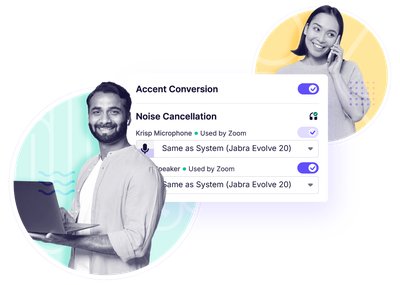Krisp is adding another tool to its growing AI-powered meeting suite, one that tackles an often unspoken challenge of global teams: the accent gap. The company recently unveiled its new AI Accent Conversion feature, which transforms various accents into standard American English in real-time during calls – all while keeping what makes each voice unique.
"Can you repeat that?" It's the question nobody wants to ask. For international teams, these moments aren't just uncomfortable – they're productivity killers. Krisp, a TechNexus Venture Collaborative portfolio company, says its latest innovation aims to make these moments disappear, letting engineers explain complex updates, salespeople nail their pitches, and support teams help customers without communication hiccups.
What sets this technology apart is its subtlety and speed. Unlike robotic voice changers, Krisp's tool preserves the speaker's natural voice and emotional inflections while only adjusting pronunciation. The tool does this with just 200ms latency – what Krisp calls "an imperceptible delay in conversations" – as you can see in the video demo showcasing Accent Conversion in real time.
The new feature slots right into Krisp's existing desktop app, which already cancels background noise, enhances voice clarity, and transcribes meetings. Users don't need to toggle between different programs, as everything happens in one place. And in an era of heightened privacy concerns, the company processes everything directly on users' devices, not in the cloud.
Since launching in 2017, Krisp has steadily built tools for an increasingly digital working reality, where kitchen tables double as conference rooms and the person you're presenting to might be eight time zones away. Their expanded suite now addresses not just how we sound, but how we're understood.
Krisp's strategic expansion into accent conversion marks a significant milestone. With over $17 million raised across funding rounds, the company continues to leverage its technological edge to address genuine market needs in the high-growth communications sector.
